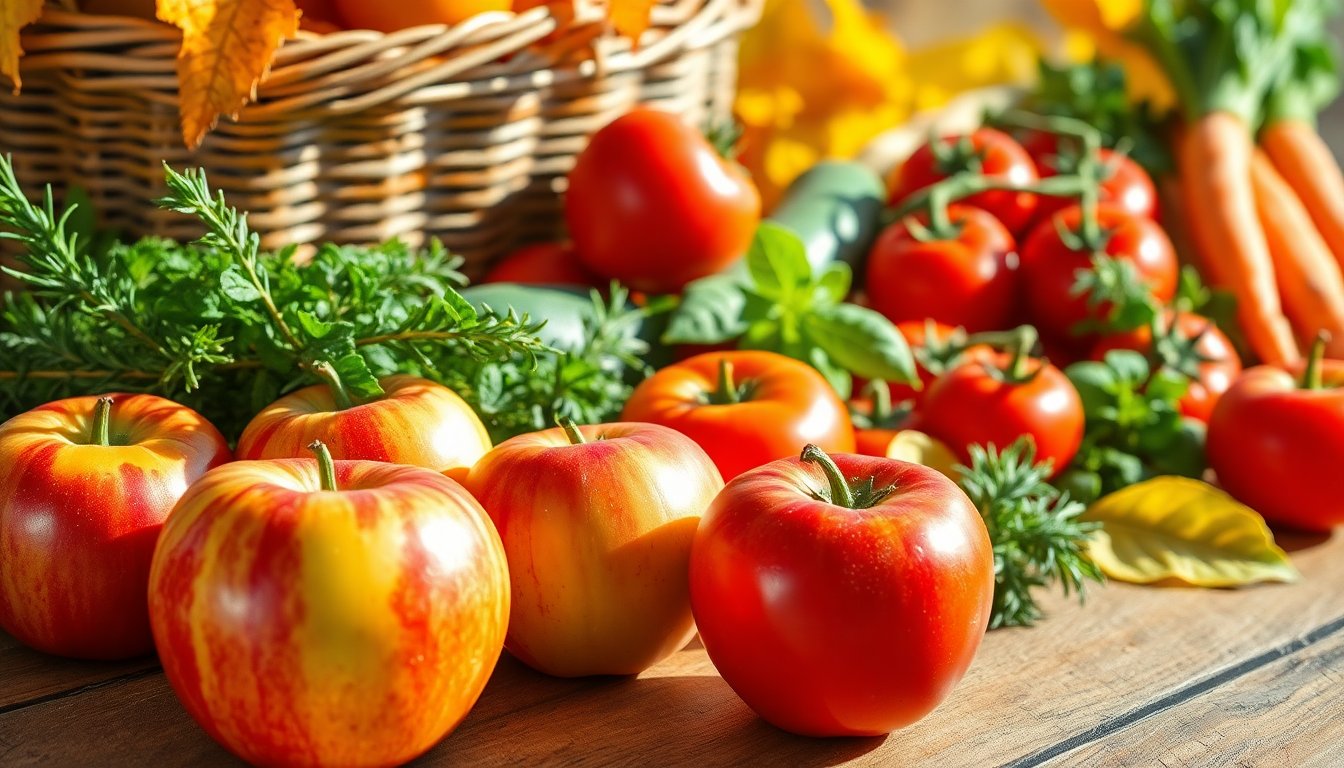Table of Contents
Celebrating the beauty of seasonal ingredients
Seasonal ingredients offer a sensory experience that captivates the senses. The crispness of a freshly picked apple shines under the autumn sun, while a ripe tomato radiates subtle sweetness, warmed by the garden’s embrace. Cooking with ingredients at their peak not only enhances flavors but also fosters a deeper connection to nature’s cycles. Each seasonal ingredient carries its own narrative, marking a journey from farm to table that warrants recognition.
The significance of seasonal ingredients
In the culinary world, seasonal ingredients encompass fruits, vegetables, and other products harvested during specific times of the year. This practice ensures optimal flavor and nutritional value. Cooking with ingredients in season aligns with nature’s cycles, supports local farmers, and promotes sustainability. The palate never lies; the flavors of seasonal produce are more pronounced and vibrant, providing an authentic and satisfying taste experience.
Consider the humble pumpkin. In season, it transforms from a bland gourd into a creamy, sweet delight, suitable for roasting, puréeing, or using in soups. This versatility highlights its rich flavor profile, which is enhanced by the soil and climate in which it grows—a concept known as terroir. Each bite encapsulates the essence of the land, the farmer’s care, and the changing seasons.
A journey through ingredients
The story of each ingredient begins long before it reaches the kitchen. Take wild asparagus, for example, which thrives in the fields of Italy during early spring. This vegetable is not merely an ingredient; it embodies a rich tradition. For generations, families have ventured into the fields to forage for these tender spears, making the act of gathering a historical celebration that connects them with the earth and its seasonal bounty.
As a chef, I have learned that understanding the origins of ingredients enhances our appreciation for them. This is where filiera corta, or short supply chains, become essential. By sourcing ingredients directly from local farmers, chefs can ensure their produce is fresh, flavorful, and sustainably cultivated. This approach not only bolsters local economies but also minimizes the carbon footprint associated with transporting goods over long distances.
The technique of cooking with seasons
Cooking with seasonal ingredients involves a technique that prioritizes simplicity while allowing natural flavors to shine. Methods such as fermentation, pickling, and roasting enhance the taste of seasonal produce, creating layers of flavor that captivate the palate. For example, fermenting vegetables like radishes or cucumbers not only preserves them but also adds a delightful umami element to dishes, transforming a simple salad into a complex flavor experience.
As one delves into these culinary techniques, it is essential to recognize that behind every plate lies a story—a narrative woven from the threads of tradition, innovation, and respect for the earth. Each dish serves as a tribute to the ingredients, the farmers, and the changing seasons.
Embracing the essence of seasonal cooking invites everyone to partake in a culinary journey. Visiting a local farmers’ market opens the door to new ingredients and flavors. Experimenting with these ingredients not only enhances your cooking skills but also fosters a community spirit. Sharing your culinary creations with friends and family further enriches this experience. Celebrating the diverse flavors each season offers honors the stories behind every dish, creating connections that resonate through taste.


